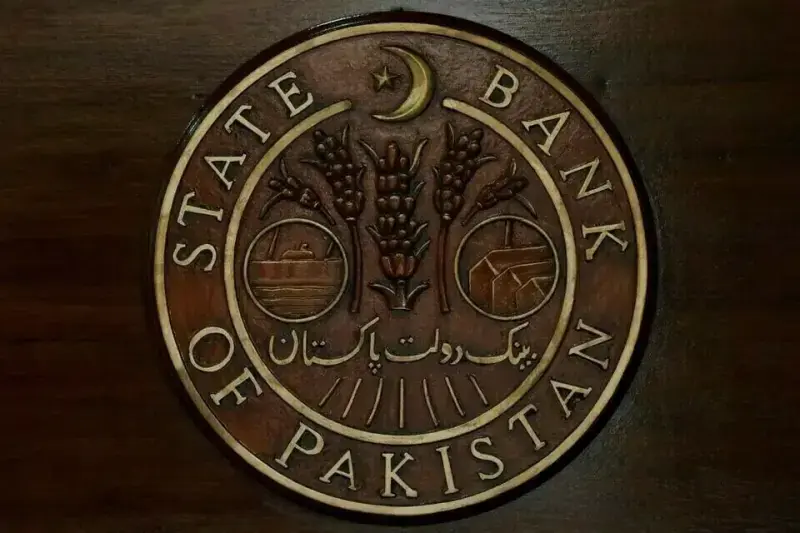Pakistan’s macroeconomic conditions strengthened in FY25 as prudent monetary policy and fiscal consolidation sharply reduced inflation and restored stability, according to the State Bank of Pakistan’s Governor’s Annual Report (GAR) 2024-25, released on Friday. The central bank, however, warned that global trade shifts, geopolitical tensions, and domestic floods pose risks to the outlook, underscoring the need for sustained structural reforms.
As per the Governor’s Annual Report 2024-25 (GAR), Pakistan’s financial system remained resilient and real GDP growth edged higher.
GAR is published under Section 39 (1) of the SBP Act, 1956 (as amended up to January 2022), which mandates the SBP Governor to submit an annual report to the Majlis-e-Shoora (Parliament) regarding the SBP’s objectives, the conduct of monetary policy, and the state of the economy and the financial system.
According to the report, the disinflationary trend that began in FY24 became more pronounced during FY25.
Macroeconomic stability in FY25: SBP report cites IMF’s EFF, other reasons
“Average National CPI inflation dropped sharply to 4.5% from 23.4% in FY24 and 29.2% in FY23,” read the report
The decline was broad-based, with food inflation contributing the most due to improved availability of food commodities in the domestic market and lower international food prices, the report noted.
Meanwhile, energy inflation also decreased substantially which benefited from downward adjustments in administered energy tariffs amid softer global oil prices.
The report highlighted that, responding to the improved inflation outlook, the Monetary Policy Committee (MPC) reduced the policy rate by a cumulative 1,100 basis points between June 2024 and June 2025.
“However, it notes that due to lingering uncertainties—including sticky core inflation during H2-FY25, evolving global trade tariffs, rising geopolitical tensions, and volatility in administered energy prices—the MPC slowed the pace of monetary easing in the second half of FY25.
“This measured stance facilitated a notable expansion in private sector credit and supported a gradual recovery in economic activity, especially in the latter part of the fiscal year.
“With the fiscal deficit narrowing to a multi-year low of 5.4% of GDP, and the primary surplus more than doubling to 2.4%, fiscal consolidation supplemented the monetary policy stance to help bring inflation down,” the report said.
On the external front, the report noted that the current account balance (CAB) posted a surplus for the first time in over fourteen years.
”The CAB surplus, combined with increased financial inflows following the IMF’s Extended Fund Facility programme, enabled SBP to conduct significant foreign exchange purchases from the interbank market that strengthened foreign exchange reserves, and enhanced FX market stability,” it said.
The GAR FY25 highlights several measures taken by SBP as part of its objective to support the government’s economic policy objectives. In particular, it highlights various exchange company reforms and administrative measures to boost workers’ remittances—such as enhanced incentives for banks, and targeted outreach to the diaspora—as well as measures to facilitate exporters, particularly in the IT sector, through enhanced retention limits to promote reinvestment and innovation.
Significant strides were also made in the digital payments landscape in an ongoing effort to promote a cashless economy. SBP implemented digital payment acceptance solutions nationwide along with further digitisation of government payments.
The Report also discusses the launch of the National Financial Inclusion Strategy 2024-28, which aims to further raise financial inclusion to 75% and reduce the gender gap to 25% by 2028.
It notes that initiatives, such as the National Financial Education Roadmap 2025-29, continued implementation of the Banking on Equality policy, and targeted measures for Islamic banking, agriculture, and SME financing, further advanced financial inclusion in FY25.
Recognising the recent reforms, such as taxation and customs tariff reforms, deregulation of the agricultural commodity market, and gradual withdrawal of untargeted subsidies, the report emphasises the need for steadfast implementation of structural and governance reforms for sustaining price and financial stability.
Pointing to challenges stemming from global tariff policy shifts in 2025, and the domestic 2025 floods, GAR FY25 assures that SBP “remains vigilant, closely monitoring the evolving risks and factoring them into its policy decisions to safeguard price and financial stability, both of which are essential for achieving sustainable economic growth”.


